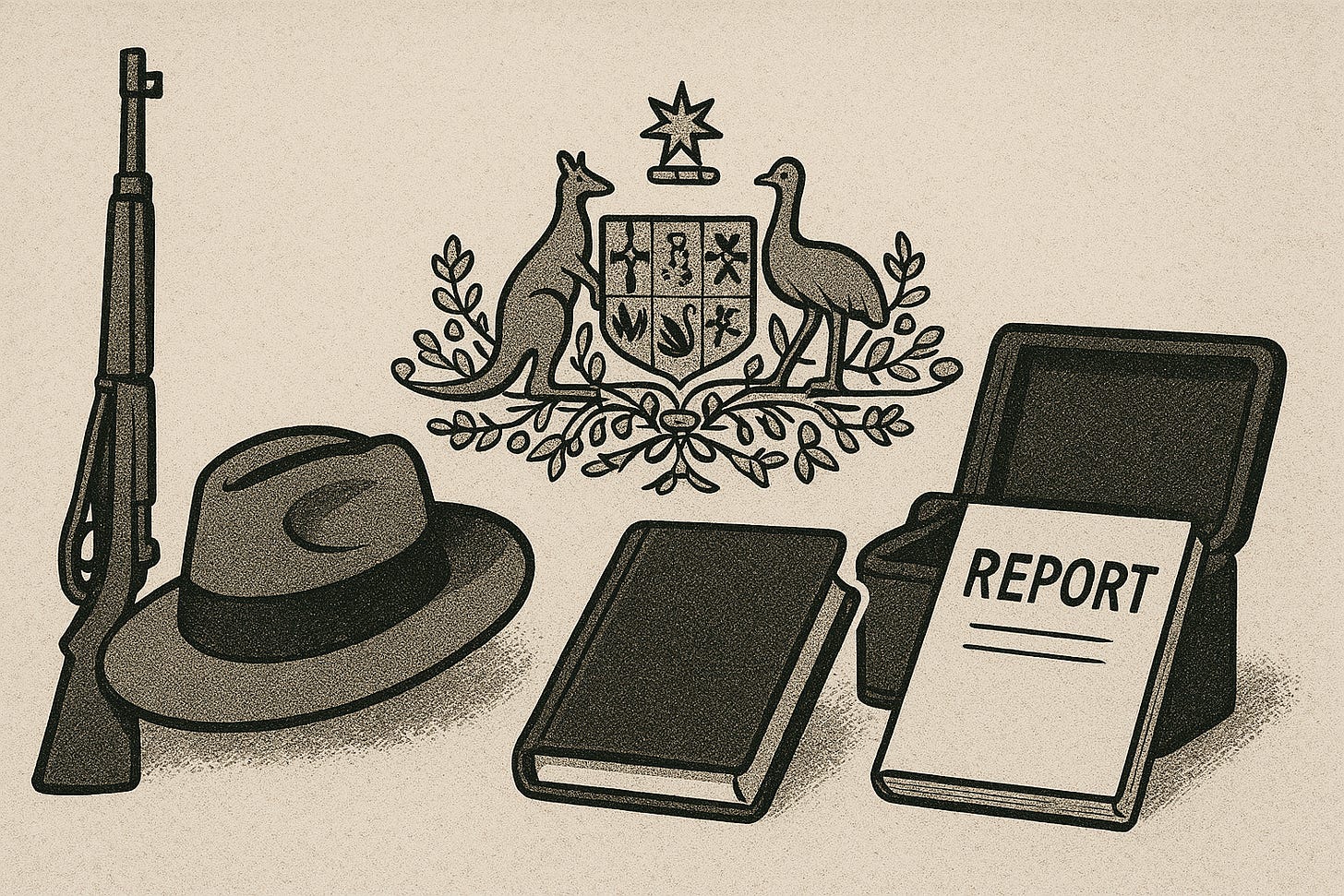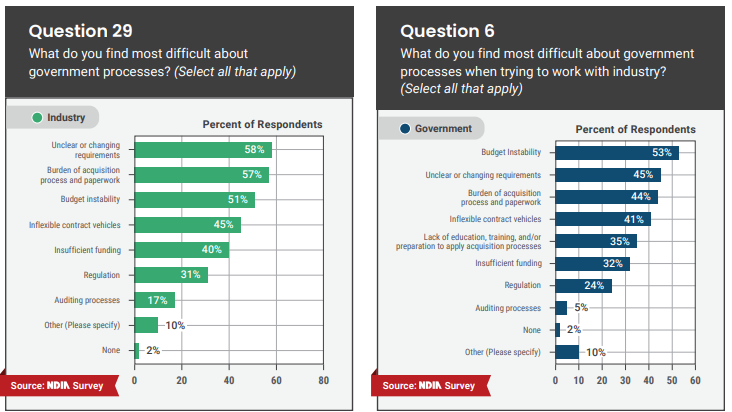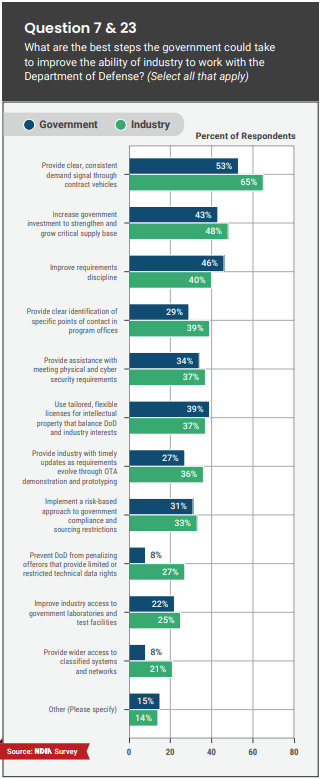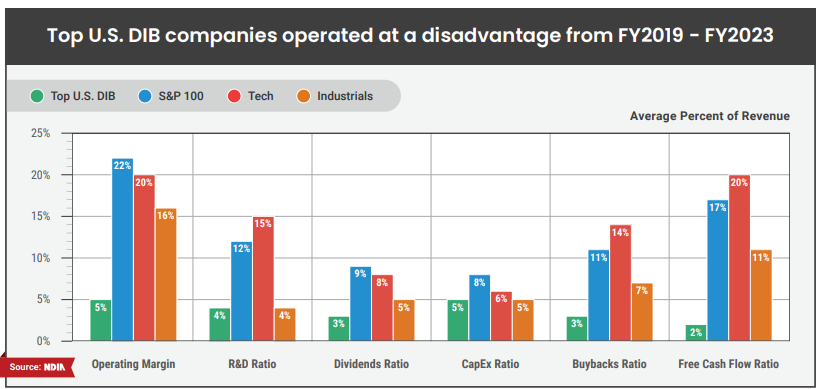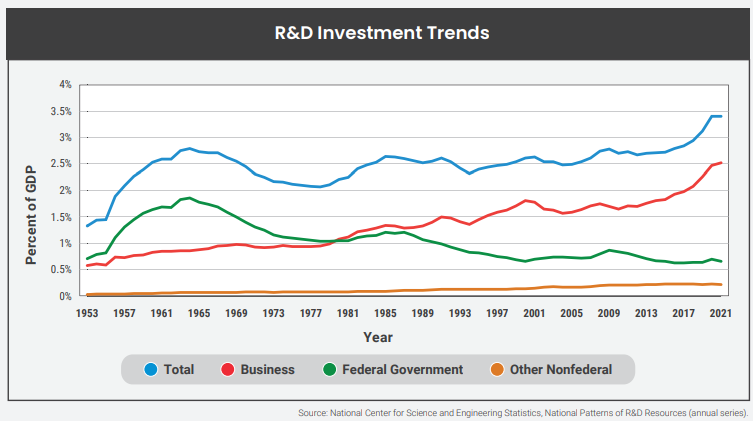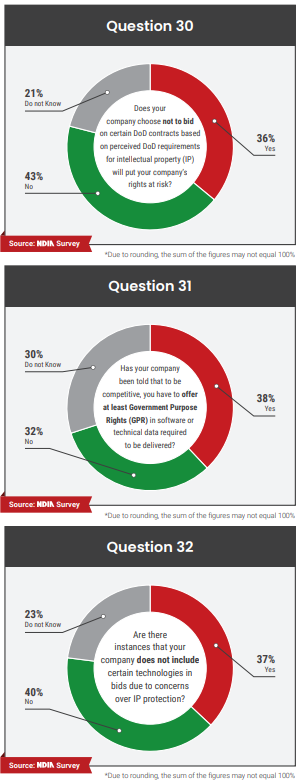Assessing Australia’s 2024 Intelligence Review
Pete Hegseth's trip to Micronesia, Philippines, & Japan; New DIB Report; Indo-Pacific Articles
Hub Story: Australia Releases 2024 Independent Intelligence Review
Spoke Story: Pete Hegseth’s Trip to Micronesia, Philippines, and Japan
Spoke Story: Key Findings From New Defense Industrial Base Report
Alliance Insights: Key Articles This Week
Hub Story: Australia Releases 2024 Independent Intelligence Review
Last week, the Australian government released its 2024 Independent Intelligence Review (IIR). The IIR provides a comprehensive analysis of Australia’s national intelligence community and offers recommendations for improving its effectiveness and strategic alignment. The IIR was tasked with first, gauging the effectiveness with which the Australian national intelligence community serves the national interest and meets the needs of government; and, second, examining how well positioned the community is for the future.
The 2024 IIR builds on the foundation of the original 2017 IIR, serving as a follow-up assessment of Australia’s national intelligence community. The 2017 IIR focused on recommending the integration of institutions and processes to better connect Australia’s dispersed intelligence agencies into a more coordinated and cohesive national intelligence community.
The central recommendation of the 2017 IIR was for the Australian government to create an Office of National Intelligence (ONI) within the Prime Minister’s portfolio, led by a Director-General who would serve as the Prime Minister’s chief adviser on intelligence matters. While not directing individual agency operations, the Director-General would coordinate the national intelligence community to ensure integrated strategies. ONI would manage the intelligence enterprise at a strategic level, including setting national intelligence priorities, evaluating agency performance, planning workforce and capabilities, and fostering data sharing and collaborative analysis. It would also absorb the Office of National Assessments, expanding its role in intelligence assessment through greater contestability and external engagement.
The recommendations in this 2024 Review are informed by the following principal findings:
First, the 2024 IIR notes meaningful progress since the 2017 Review toward building a world-class intelligence community, with improved integration and coordination across Australia’s national intelligence enterprise. However, challenges remain in fully aligning ONI’s responsibilities with its capacity to lead the broader community. While ONI’s role has expanded, there is still room to deepen collaboration and foster a more cohesive, community-driven culture across the intelligence agencies.
Second, while the 2017 Review emphasized enterprise-level management within the intelligence community, the 2024 Review highlights the importance of better integrating intelligence with other parts of government. Strengthening these cross-government relationships will help align intelligence outputs with national priorities and enable intelligence to function more effectively as a tool of statecraft in an increasingly competitive global environment.
Third, the report stresses the need for innovation to address evolving national security threats. Intelligence agencies must be prepared for future crises, effectively adopt emerging technologies like artificial intelligence, strengthen both international and non-governmental partnerships, and build a resilient workforce. Meeting these four interrelated challenges is essential to ensuring the intelligence community remains agile, capable, and fit for purpose in a rapidly changing world.
The 2024 Review’s recommendations are summarized below:
Role of the Office of National Intelligence (ONI):
Establish clearer expectations for the intelligence community through a statement from the Prime Minister at the start of each term.
Include the Director-General of National Intelligence (DGNI) as a member of key government subcommittees to enhance integration.
Enterprise Management:
Increase resources for the Office of National Intelligence (ONI) to support enterprise management responsibilities.
Conduct annual evaluations of intelligence support for policymaking.
Improve the allocation and prioritization of resources against intelligence missions.
Conduct capability reviews following the appointment of new NIC agency heads.
Intelligence Support for Ministers:
Develop an ‘Introduction to Intelligence’ briefing for new ministers and their staff after government changes or reshuffles.
Provide regular, dedicated briefings to the full Cabinet on shifts in Australia’s security environment.
Strengthen intelligence support to a broader range of ministers, including timely advice beyond Canberra.
Policy and Intelligence:
Strengthen the Department of the Prime Minister and Cabinet’s coordination of national security policy.
Invest in classified infrastructure to improve the use of intelligence in policymaking.
Develop a coordinated intelligence outreach and education initiative for the policy community.
Economic Security:
Treasury should lead a review of economic security functions across government.
Establish a dedicated economic security function within the Treasury, with input from NIC agencies.
Enhance ONI’s capacity to support economic security decision-making.
Value of Contestability:
Improve contestability in intelligence assessments through roundtable discussions, analytical techniques, and acknowledgment of different perspectives.
Require ONI to produce at least two National Assessments annually.
Public Release of Intelligence:
Develop a policy for the declassification and public release of intelligence to increase transparency and public trust.
Preparedness:
Set clear expectations for NIC preparedness for regional crises or conflicts through a Prime Ministerial directive.
Conduct regular exercises with policy agencies to improve preparedness.
Establish a warning cell within ONI to bolster warning functions.
Increase resilience and engagement outside Canberra to maintain operational continuity.
NIC Investment:
Provide a holistic overview of major NIC programs and their risks to the National Security Committee annually.
Detail current and future capability gaps and investment needs.
Narrow the scope of the Joint Capability Fund to focus on key enterprise-level capabilities.
Collective Capabilities and Shared Services:
Adopt a more systematic approach to identifying and pursuing collective capabilities and shared services across NIC.
Technology:
Develop transition strategies for all relevant NIC agencies to move to TOP SECRET Cloud.
Prioritize data cataloging to improve data interoperability.
Establish AI governance principles and frameworks across the intelligence community.
Develop a national security-focused technology investment fund.
Create a technology strategy to address future risks and technological priorities.
Insight and Advantage Through Open Source:
Strengthen the federated approach to open-source intelligence with additional investment.
Ensure future intelligence reviews assess the organization of open-source functions for optimal outcomes.
Collective Action on People and Skills:
Develop a NIC-wide employee value proposition to improve recruitment and retention.
Standardize workforce data collection and security clearance processes to enable mobility within NIC.
Identify and nurture future NIC leaders through Australian Public Service Commission talent programs.
Establish a NIC Chief People Officer within ONI.
Partnerships:
Create a public-private talent exchange to deepen partnerships with private industry through knowledge sharing.
Legislation:
Implement recommendations from the 2019 Comprehensive Review of intelligence legislation, especially on holistic electronic surveillance reform.
Update legislative frameworks to enable NIC agencies to act more effectively in national security contexts.
Review legislative settings for foreign intelligence requirements onshore and assess legal barriers for conflict response.
Oversight:
Expand oversight jurisdiction of the Inspector-General of Intelligence and Security and the Parliamentary Joint Committee on Intelligence and Security.
Empower the Commonwealth Ombudsman to oversee the proportionality of covert and coercive powers.
Enable the Independent National Security Legislation Monitor to conduct inquiries on counter-terrorism and national security legislation.
Allocate additional vetted staff to the Parliamentary Joint Committee on Intelligence and Security leadership.
Establish a panel of technological advisers to support intelligence oversight bodies.
Spoke Story: Pete Hegseth’s Trip to Micronesia, Philippines, and Japan
US Secretary of Defense Pete Hegseth had a successful trip to the Philippines and Japan. In contrast to his recent visit to Europe, where he criticized European allies for not contributing enough to their own security, Hegseth emphasized the importance of US allies in Asia and announced several new initiatives to strengthen American cooperation in the region. While the visit followed a familiar pattern seen in previous secretarial trips to Asia, it underscored a continued US commitment to deepening regional ties.
The trip began with a visit to the Federated States of Micronesia, one of the three island nations that are part of the Compact of Free Association (COFA), alongside the Republic of Palau and the Republic of the Marshall Islands. During his visit, Hegseth announced $2 billion in new infrastructure projects, which will provide a significant boost to the American ally.
Secretary of Defense Pete Hegseth and President Wesley Simina of the Federated States of Micronesia (FSM) announced today that they reached a mutual understanding to enable the U.S. Department of Defense to begin planning and construction on key infrastructure projects in the State of Yap.
This effort is the product of several years of close collaboration, and its conclusion reflects the close and enduring partnership between the United States and FSM, underpinned by the Compact of Free Association.
Future investments in FSM and Yap State by the U.S. Department of Defense are estimated to exceed two billion dollars. These projects are designed to provide strategic operational and exercise capabilities for U.S. forces.
These projects will strengthen our deterrence and regional posture and ensure a free and open Indo-Pacific.
Hegseth’s next stop was the Philippines, where he reaffirmed strong US support for the Southeast Asian nation. His emphasis on “re-establishing” deterrence suggests that the Defense Department is serious about prioritizing the Indo-Pacific. Hegseth delivered strong statements backing the Philippines, explicitly affirming that the US-Philippines Mutual Defense Treaty covers recent tensions between Manila and Beijing in the South China Sea. Additionally, the two nations announced new initiatives aimed at strengthening their defense partnership.
Secretary Hegseth and Secretary Teodoro reiterated both countries' shared commitment to the 1951 U.S.-Philippines Mutual Defense Treaty (MDT) in an increasingly complex security environment. The Secretaries also reaffirmed that the MDT extends to armed attacks against either country's armed forces, aircraft, and public vessels – including those of their coast guards – anywhere in the South China Sea.
Key new initiatives include:
Deploying more advanced U.S. capabilities in the Philippines, including the Navy-Marine Expeditionary Ship Interdiction System (NMESIS) and highly capable unmanned surface vessels. Exercising with the NMESIS – a mobile, ground-based anti-ship missile launcher – as part of Exercise BALIKATAN and other service-to-service activities will improve interoperability and strengthen deterrence by providing coverage of strategic sea lanes from coastal positions. Training and testing on NMESIS and unmanned surface vessels as part of realistic exercises in the Philippines will increase the interoperability and operational readiness of U.S. and Philippine forces to leverage cutting-edge military capabilities in Indo-Pacific operational environments.
Conducting advanced bilateral Special Operations Forces training in the Batanes Islands. U.S. Special Operations Forces and Philippine Marines will train together on complex landing scenarios to enhance interoperability between U.S. forces and the Armed Forces of the Philippines and improve combined capability to conduct high-end operations in the Indo-Pacific region.
Publishing a bilateral defense industrial cooperation vision statement. The United States and the Philippines continue to advance their alliance through closer defense industrial base cooperation. This is intended to promote more robust military and industry partnerships, build supply chain resilience, strengthen our readiness, and bolster both nations' economies. The Secretaries announced the release of a defense industrial cooperation vision statement that identifies priority areas for near-term cooperation, including potential co-production of unmanned systems and more robust logistics support. The statement includes lines of effort that the United States and the Philippines will explore to advance these priority areas, namely seeking to: reduce barriers, collaborate on new technology, and identify discrete opportunities for collaboration. Both countries intend for this vision statement to serve as a basis to advance regional security, economic security, and Indo-Pacific prosperity.
Launching a bilateral cybersecurity campaign. The DoD and DND will collaborate to reduce cyber vulnerabilities and enhance resilience across the alliance. This campaign intends to address three primary lines of effort: establishing a secure defense network, developing a capable cybersecurity workforce, and enabling advanced operational cooperation. Enhanced cyber capability and capacity will enable greater information and intelligence-sharing, improve our lethality, and facilitate increasingly advanced operational coordination.
As outlined in the joint statement, the United States and the Philippines announced a new joint vision on defense industrial cooperation, a priority that saw meaningful progress under the Biden Administration. This new vision highlights how the Defense Department is actively working to strengthen partnerships in the Indo-Pacific, marking a notable contrast to US engagement in Europe.
US Department of Defense: Joint Vision Statement on U.S.-Philippine Defense Industrial Cooperation:
To focus defense industrial cooperative efforts, U.S. Department of Defense (DoD) and the Philippines Department of National Defense (DND) have identified the following priority areas with the greatest potential for near-term cooperation, and intend to explore additional areas in future discussions: • Unmanned systems (production; logistics)
Ammunition components/energetics (storage; All-Up Round production, logistics)
Critical minerals (refinement)
Logistics support
Ship maintenance and repair
Airspace integration
Additive manufacturing (3-D printing)
Aircraft maintenance and repair
System components and spare parts production
DoD and DND intend to further explore the following lines of effort to advance defense industrial cooperation:
Seek to remove barriers, incentivize participation, and increase compatibility of industrial regulations and processes, including regarding technology transfer.
Seek to recognize and include enablers to ensure resilience of industrial cooperation initiatives.
Seek opportunities and incentives to collaborate on new technology, innovation, and demonstrations.
Seek to identify distinct opportunities for military co-production, storage, refinement, and logistics.
After his visit to the Philippines, Hegseth traveled to Japan. Early reports suggesting that the Defense Department was considering scaling back new US initiatives with the Japanese military ultimately did not materialize. In fact, the opposite occurred. Hegseth oversaw the establishment of a new US Joint Force Headquarters in Japan, a development that will significantly enhance American warfighting capabilities and deepen US-Japan military collaboration.
Hegseth said the USFJ upgrade will help improve the command's ability to operate with Japan's Joint Operations Command, which was just established March 24, 2025, and is responsible for commanding branches of the Japan Self-Defense Forces.
"We certainly welcome JJOC's establishment this past week," Hegseth said during his opening remarks.
"It's more urgency [and] it's more cooperation in real time. It also increases our readiness to respond to [any] contingency or crisis, support U.S. operations and help Japan and U.S. forces defend [Japan's] territory," he added.
As part of the USFJ's upgrade, Hegseth said DOD will soon add additional personnel to both Tokyo and USFJ headquarters at Yokota Air Base to conduct activities aimed at strengthening bilateral bonds with the U.S. military's Japanese counterparts, as well as deepening operational cooperation…
Regarding China's growing threat in the Indo-Pacific region, Hegseth said America is committed to sustaining a ready, robust and credible deterrence throughout the U.S. Indo-Pacific Command area of operations, including across the Taiwan Strait…
"Our job at the Defense Department … is to build an alliance so robust that both the reality and the perception of deterrence is real and ongoing so that the Communist Chinese don't take the aggressive action that some have contemplated they will," Hegseth said.
"Japan would be on the front lines of any contingency we might face in the Western Pacific, and we stand together in support of each other."
Hegseth’s trip was a success. It is reminiscent in many ways of visits by former Secretary of Defense Lloyd Austin or former Secretary of State Mike Pompeo. It included strong reaffirmations of US mutual defense commitments, the announcement of new initiatives to expand allied cooperation, and a clear signal that the United States remains committed to the region. However, the positive momentum from the trip is somewhat undermined by the Trump administration’s aggressive tariffs on American allies and broader concerns about the unpredictability of US foreign policy. Nevertheless, the trip was a welcomed development and reinforced America’s enduring presence in the Indo-Pacific.
Spoke Story: Key Findings From New Defense Industrial Base Report
The National Defense Industrial Association released their Vital Signs 2025 report recently. NDIA’s Vital Signs 2025 report highlights a positive shift in Washington’s policy discourse, emphasizing bipartisan recognition of the US Defense Industrial Base's (DIB) critical role in national deterrence. However, despite favorable political conditions, reforms to accelerate defense acquisition and innovation face challenges, requiring balanced policies that reduce regulatory burdens and share risk between the government and contractors. To sustain readiness, increased and stable defense funding is essential, as failure to maintain a resilient DIB could jeopardize US security, prosperity, and values.
Finding One: Government and Industry Largely Agree on the Problem
NDIA conducted a survey of relevant government and industry individuals to assess views about the US DIB from their perspectives. The two camps largely agree on the challenges holding the DIB behind on its full potential.
Find Two: Government Regulation and Budgeting Makes it Difficult for Defense Companies to Reinvest
The US government creates conditions that place the US Defense Industrial Base (DIB) at a competitive disadvantage for three key reasons.
First, the US defense sector is not driven by traditional market forces, as the government is often the sole customer, limiting profits and controlling prices based on costs rather than value.
Second, the US DIB is heavily regulated, which increases operating costs, requires specialized systems, and limits the available talent pool due to security clearance requirements.
Finally, the DIB is constrained by the US government’s complex and unpredictable budget and acquisition processes, which create demand uncertainty and business risk, especially during changes in presidential administrations.
Finding Three: Fear Over IP Protection Prevents Companies From Working With US Government
Companies are increasingly concerned about losing their intellectual property (IP) rights when contracting with the Department of Defense (DoD), which discourages them from bidding on contracts. Many fear that DoD requirements, such as offering Government Purpose Rights (GPR), could jeopardize the future value of their innovations in the commercial market. As a result, 36 percent of private sector respondents chose not to bid on certain DoD contracts, while 37 percent withheld certain technologies from bids due to IP concerns, limiting DoD’s access to cutting-edge innovations and advanced technologies.
Alliance Insights: Key Articles From This Week
Australia:
Defense News: Aussie spy planes worked overtime during nearby Chinese naval drills
Defense News: US Army plans Australia test of missile launcher that has irked China
Breaking Defense: Australian air force bullish on Ghost Bat ahead of production decision
South Korea:
Brookings: Is South Korea ready to define its role in a Taiwan Strait contingency?
Global Asia: How South Korea’s Political Crisis Could Affect Regional Security
Yonhap News Agency: Defense ministry reaffirms USFK's role in keeping peace on Korean Peninsula
Nikkei Asia: South Korea watchdog blocks Hanwha $2.5bn capital plan
Yonhap News Agency: Arms agency chief visits Romania for talks on defense industry cooperation
India:
TechnoSports: India to Establish Maitri-2 Antarctic Research Station by 2029
The Print: India & African nations to hold 1st joint naval exercise in Indian Ocean
The Philippines:
US Indo-Pacific Command:


